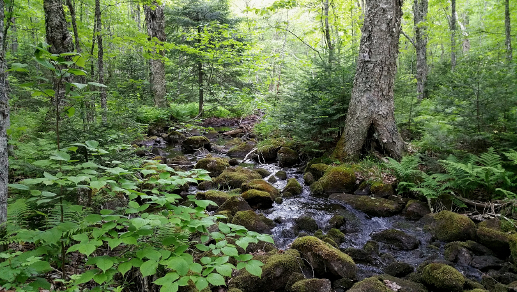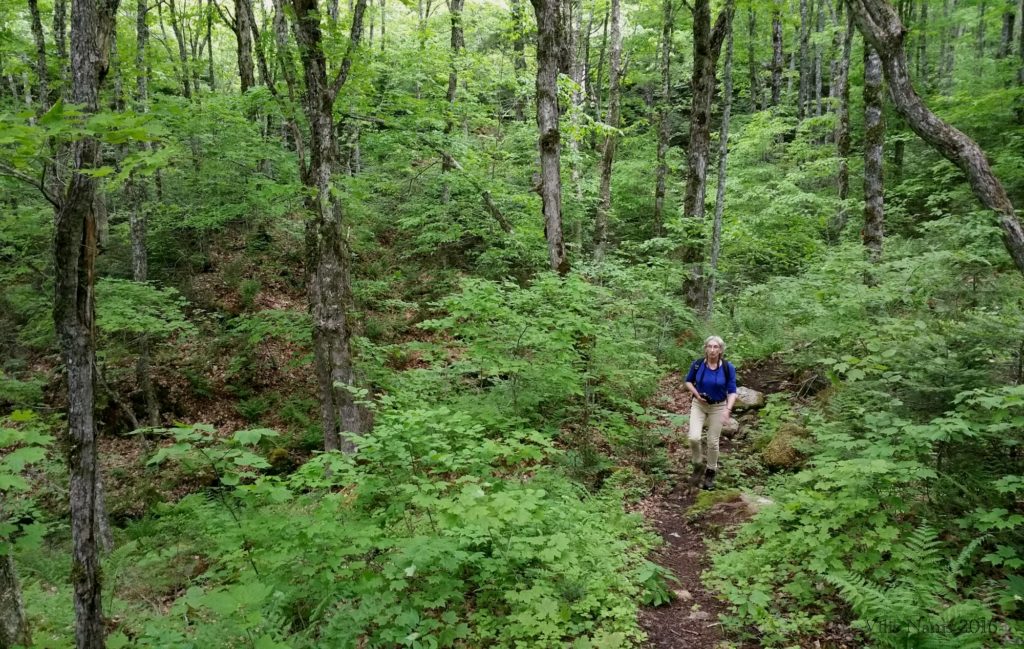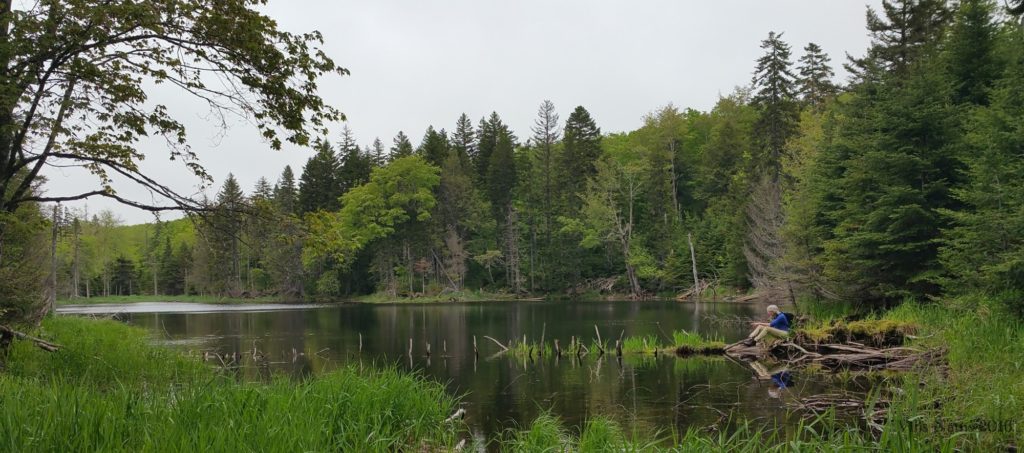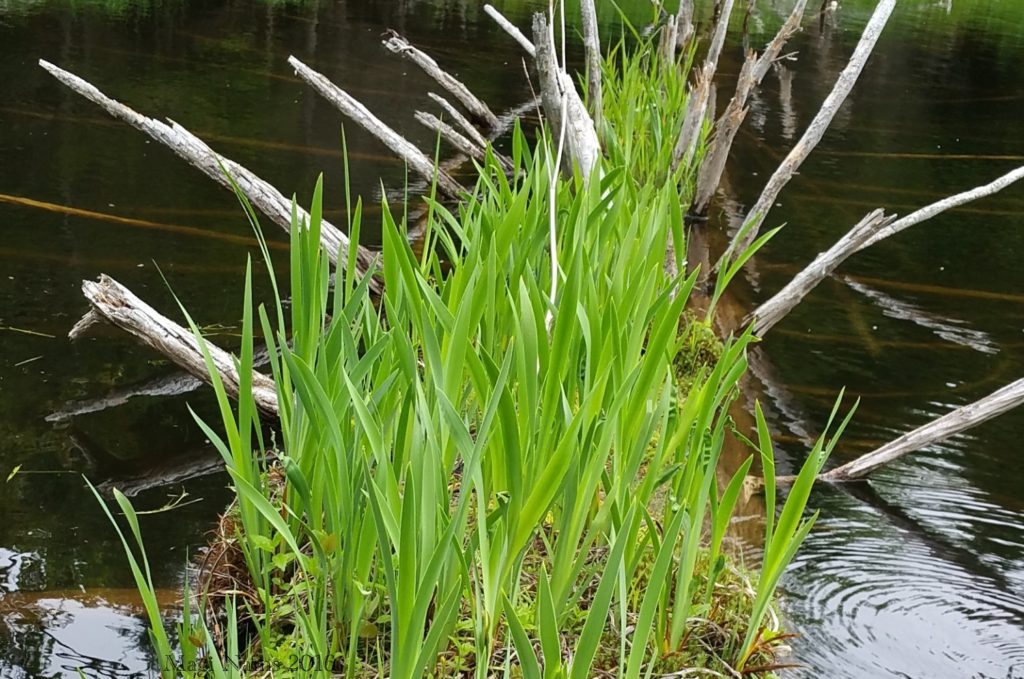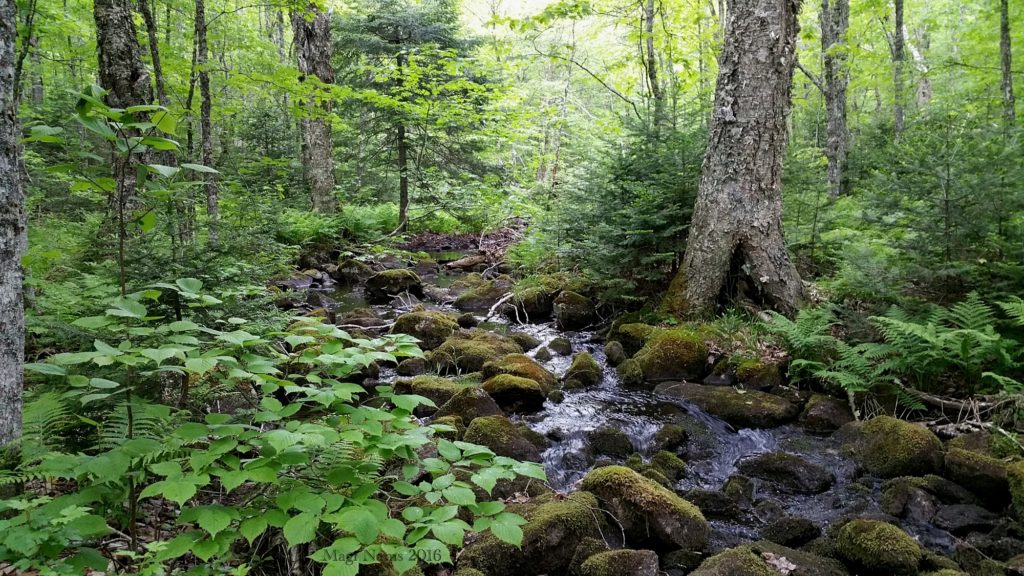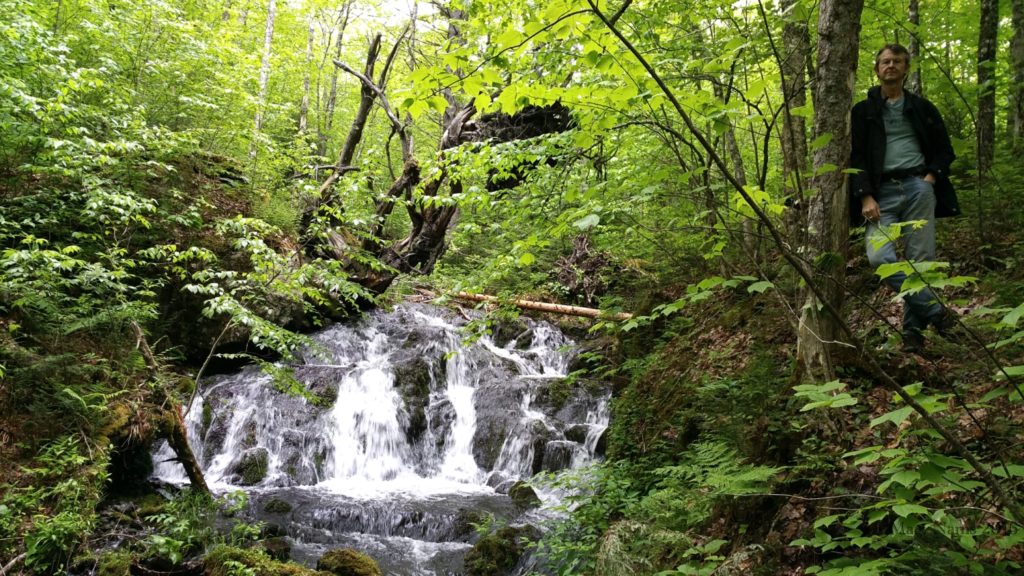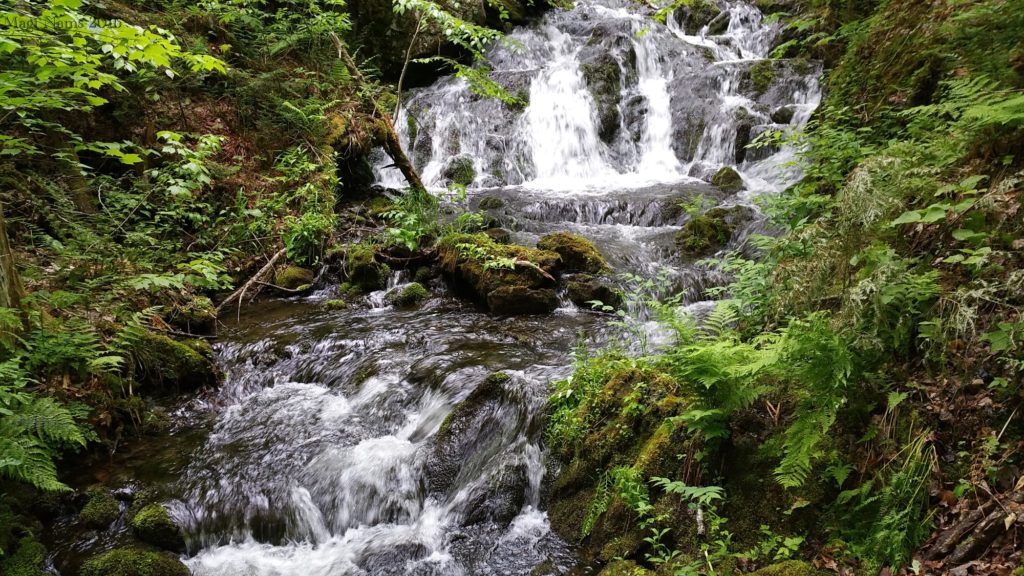Want a great hike in northern Nova Scotia? Gully Lake Wilderness Area offers 25 kilometres of trails through gorgeous native hardwood and mixed-wood forest.
Gully Lake Wilderness Area is a 3800-hectare block of protected native hardwood and mixed-wood forest in the scenic Cobequid Mountains near Earltown in northern Nova Scotia. A hiker’s paradise, the Gully Lake Wilderness Area offers 25 kilometres of well-marked trails maintained by the Cobequid Eco-Trails Society. The trails consist of two major loops plus connectors. Over the years, my family has hiked and canoed in the area. Yesterday, on a cool, breezy, drizzly, spring afternoon, my husband, Vilis, and I returned to hike the Sandy Cope Lake Trail.
From the trailhead on Kemptown Road, we hiked in on 0.85-kilometer Yellow Birch Trail, which is well-named. Birches towered over us, their shiny, gold-tinted bark peeling in small curls. We soon linked up with Portage Trail for 0.8 kilometre through mixed-wood forest and then struck out on the 6.3-kilometre Sandy Cope Lake Trail. (Tap on photos to enlarge.)
The shorter of the two loop trails within Gully Lake Wilderness Area, the Sandy Cope Lake Trail took us through open hardwood forest, pockets of mixed-wood forest and a mossy stand of conifers. Boardwalks provided passage over swampy areas, and sturdy wooden bridges spanned the Salmon River and White’s Brook.
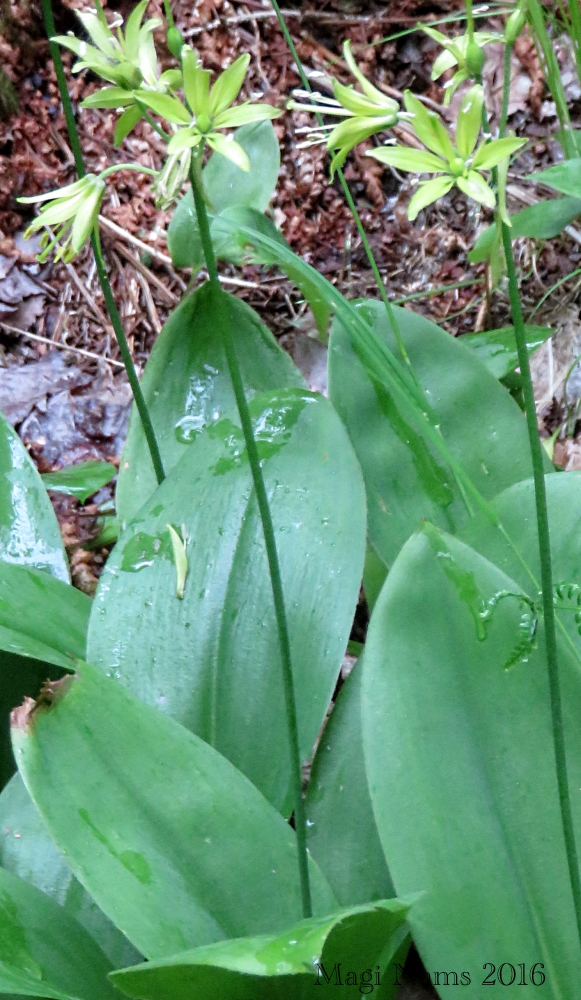
Clintonia (Clintonia borealis), also called blue bead lily, on Sandy Cope Lake Trail, Gully Lake Wilderness Area (© Magi Nams)
In the hardwood forest, it was a delight to walk beneath the lofty canopies of sugar maples, red maples and yellow birches, their leaves rustling in a treetop breeze. I spotted young beech and striped maple trees, eastern hemlock and balsam fir saplings, and numerous shrubs and ferns in the forest understory. Wildflowers – notably bunchberry, starflower, sarsparilla, blue bead lily (clintonia), false lily-of-the-valley, and the white form of pink lady’s slipper – grew among the leaves on the forest floor. I found a single, fading blossom of painted trillium.
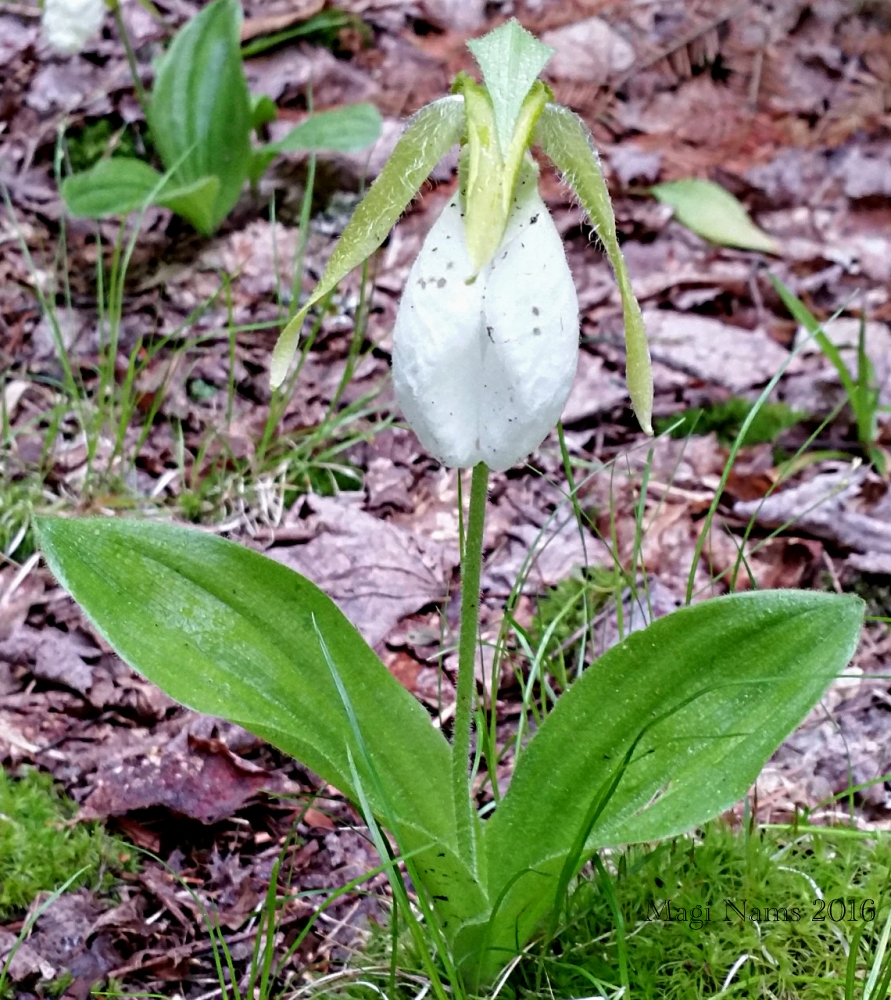
White form of pink lady’s-slipper (Cypripedium acaule) on Sandy Cope Lake Trail, Gully Lake Wilderness Area (© Magi Nams)
Eastern chipmunks chittered and scurried through the undergrowth, rustling leaves. I spotted white-tailed deer tracks in a muddy section of trail. Vilis pointed out a pile of spruce cone scales on the ground, evidence of a red squirrel’s feeding. A hairy woodpecker drummed on a tree. A Swainson’s thrush’s liquid notes spilled into the forest, and other woodland choristers also serenaded: black-throated green warbler, black and white warbler, golden-crowned kinglet, ovenbird, red-eyed vireo, hermit thrush, American robin, purple finch, white-throated sparrow, black-throated blue warbler, Canada warbler. Emitting distraught cries, a female ruffed grouse burst out of the undergrowth and lured us away from her chicks with a broken-wing display.
At Sandy Cope Lake, least flycatchers hawked for insects. Wild irises grew on a mossy, fallen log in the water. A grackle creaked out its squeaky-gate call, and a winter wren’s bubbling song lit the air with bright sound.
One of the highlights of the eastern arm of the Sandy Cope Lake Trail loop was White’s Brook, with its glorious woodland scenes and Donald’s Falls.
All in all, we had an excellent hike in Gully Lake Wilderness Area, through serene, spectacularly lovely hardwood forest. Allow two to three hours to hike the Sandy Cope Lake Trail, and don’t rush. Drink in the rustlings of wind-jiggled leaves and the songs of summer birds. Search the forest floor for wildflowers. Feel your soul rest in the shelter of tall trees and let your spirit dance with the trickle and rush of gravity-tugged water.

